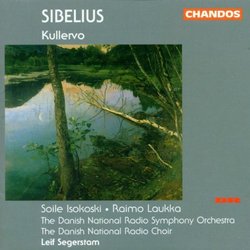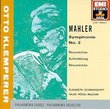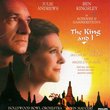| All Artists: Sibelius, Isokoski, Laukka, Danish Natl Orch Title: Kullervo Members Wishing: 0 Total Copies: 0 Label: Chandos Release Date: 10/17/1995 Genre: Classical Styles: Forms & Genres, Theatrical, Incidental & Program Music Number of Discs: 1 SwapaCD Credits: 1 UPC: 095115939321 |
Search - Sibelius, Isokoski, Laukka :: Kullervo
CD DetailsSimilar CDs
Similarly Requested CDs |
CD ReviewsThe performance of breath and intimacy. David A. Hollingsworth | Washington, DC USA | 12/31/1999 (5 out of 5 stars) "After the death of Sibelius by 1957 (age 91), Paavo Berglund was the first conductor to record this epic, majestic, imaginative work of 1892. Whereas Bruckner and Grieg disowned their Symphony in D Minor and Symphony in C minor respectively, Sibelius requested the Kullervo Symphony not to be performed during his lifetime. A misfortune, for Kullervo shows signs of promise and individuality (as did the above-mentioned symphonies of Bruckner and Grieg). Neemi Jarvi was the next conductor to record the work by 1982 and by the 1990s, five recordings of the work commenced. We have no fewer than seven recordings of the work to choose from, which is a good thing.Leif Segerstam's approach to the score is more majestic and grandeur than Neemi Jarvi or his son Paavo Jarvi (or other conductors for that matter). The tempi remained constant throughout each of the five movements and the pace was well planned and articulated. The Danish National Radio Symphony Orchestra gave a very telling, compelling, intimate performance and the Danish National Radio Choir sang with polish though slightly subdued and under-enthused. However, soprano Soile Isokoski and baritone Raimo Laukka gave such a vivid singing that one may have thought that an actual opera was performed. Well done.Neemi Jarvi and the Gothenburg Symphony (under BIS recording) take first place as far as authoritativeness is concerned. The tempi approach is somewhat more urgent and with gusto than the later recordings of the work (including Segerstam's). Jarvi's performance is of power and demonstrate more effectively the familiarity of Sibelius' epic piece. But Segerstam's performance is not far behind Jarvi's model performance and is therefore worthy of investigating.Recommendable."
|


 Track Listings (5) - Disc #1
Track Listings (5) - Disc #1








